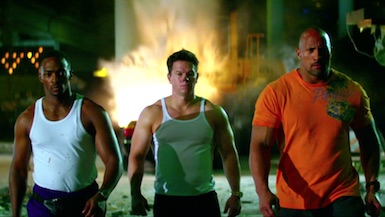|
|
The Number One Movie in America: Pain & GainBy Sean CollierApril 8, 2020
It’s not hard to understand why “Pain & Gain” didn’t resonate. A true-crime tale oddly reconstructed as a violent-yet-wacky caper, the film follows a trio of South Beach lunkheads — Wahlberg, Johnson and Anthony Mackie — as they attempt to extort a small-time bigwig played by Tony Shalhoub. It has genuine moments of comedy, which are swiftly undercut by off-putting violence. It has nuanced performances, particularly by Mackie and Ed Harris, which are neutralized by the presence of an unlikeable-by-design Wahlberg in nearly every scene. “Pain & Gain” was a long-simmering project Bay kept pushing as a break from his string of “Transformers” moneymakers. He attempts to flex his artistic side with dramatic composition and “Scarface”-meets-“Miami Vice” style, with middling results. Some sequences work as intended; others miss the mark by miles. It’s not strictly a bad movie, but it is certainly not a good one. Bay’s oeuvre is not without merit; “The Rock” is a perfectly serviceable boulder of late-century hyperaction, and even the bloated “Armageddon” has merit as the sort of summer spectacle readymade for a drive-in cinema. But projects like “Pain & Gain” expose whatever weakness remain hidden by the director’s more popcorn-friendly fare. This is a guy that knows his way around robots in disguise and gargantuan pyrotechnics — but not human motivation. “Pain & Gain” is the subject of the latest episode of The Number One Movie in America, a look back at past box-office champions. Each episode’s film is drawn at random from a list of every number-one movie since 1982. Please listen and subscribe! Next time: Hey! Teacher! Leave them kids alone! Actually, help them, they need guidance..
[ View other Number One Movie in America articles ]
[ View other columns by Sean Collier ]
[ Email this column ]
|

|
|
|

|
Friday, November 1, 2024
© 2024 Box Office Prophets, a division of One Of Us, Inc.


